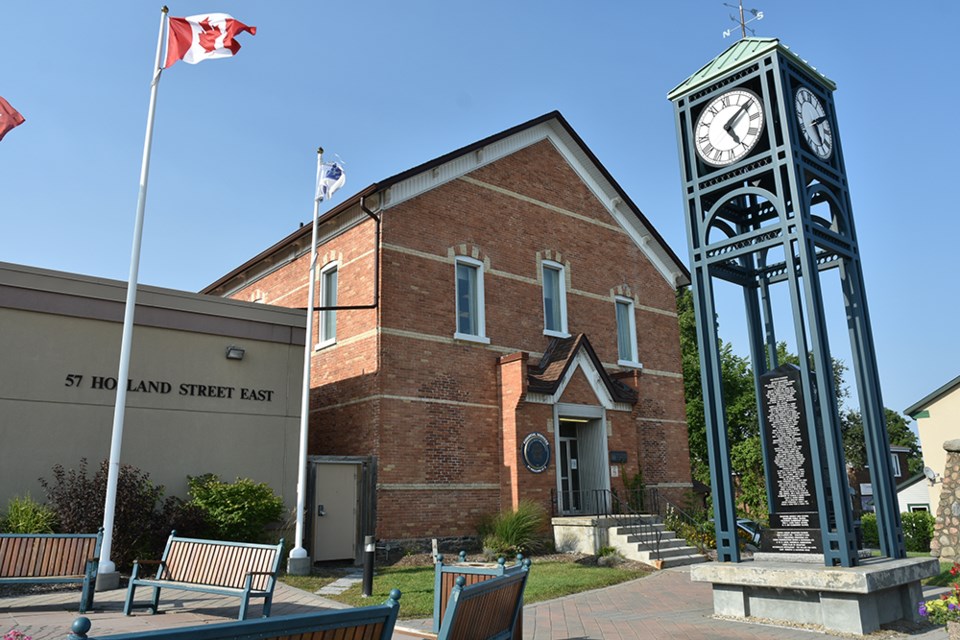This evening, Catherin Oosterbaan, a policy advisor with the Ontario Ministry of Agriculture, Food and Rural Affairs, will present her findings from a series of consultations with local business owners (including yours truly) to the town’s economic development committee.
As we reopen back up from COVID-19 lock down, the critical imperative is to have a plan to jumpstart business activity in town.
In next year’s budget, council should endeavour to hold property taxes as close to a net zero increase as possible at minimum; residents and property owners should not be asked to fork over more of their hard-earned money when the economy is still so uncertain.
But that does not mean council should curtail its ambitions or pull in its horns.
On the contrary, the best medicine for an uncertain economy is for council to aggressively use stimulus funds from the provincial and federal governments, and a combination of debenture spending locked in at low interest rates, to aggressively build up the town, injecting capital into the market place, creating jobs, investor confidence, and a more resilient business and social climate in town.
Nowhere is this truer than in our historic downtown – what Oosterbaan calls the “biggest opportunity” for focusing during the COVID-19 recovery.
In Oosterbaan’s report, she is categorical: “Downtown Revitalization has been on the agenda for a long time but lacks a firm vision”. She suggests, the downtown “needs an anchor to draw people in…the river?...A larger gathering space and connection to green space would encourage shoppers to linger.”
Council needs to prioritize making the Holland River entrance to town what Oosterbaan calls “a destination – think Newmarket, Orangeville that are beautiful and distinctive”. A focal “gateway” into the downtown with trails and parks along the Holland River will not only beautify this area, it will provide foot traffic and a new place for businesses to develop. The town needs to invest to kickstart the revitalization of this area as a place for businesses to grow.
She also proposes that the downtown four corners business area needs “Anchor tenants – the Ttwn?” Short answer – yes!
The town needs to be the “anchor tenant” of the downtown core, with a full redevelopment of the old community centre into parkland – with upgraded skatepark, tennis courts and ball diamond – and the speedy development of a town hall and administrative centre.
In 2008 during the Great Recession, the council of the day seized the opportunity that economic downturn afforded, converting stimulus dollars into our leisure centre and library; they can and should do the same thing today with a town hall at the old community centre. As the former Mayor Chicago, Rahm Emmanuel, said, “never let a crisis go to waste”.
The need for the town hall is critical; it has been on the backburner for far too long. It’s time to get it done.
The reasons are many. First, as Oosterbaan notes, housing all civic employees in one building in the downtown will provide a steady client base to local businesses – and streamline services for residents and businesses, and cut down in duplicative administrative costs.
Further, the focus group I joined spoke a lot about the need for a “business hub” for small business owners to access some communal resources, book board room space and host events, something a town hall space could easily offer. Moreover, a town hall could be developed with new child-care spaces, a critical need before the pandemic that is only exacerbated by the school shut down.
More broadly, redeveloping the downtown – including revitalization of Holland Street itself and parking spaces – will rejuvenate this area and give the town shovel-ready projects to use stimulus infrastructure dollars from the other levels of government. The goal should be walkable streets, what planning thinkers call “placemaking”.
Vibrant municipalities revitalize their downtowns, spurring economic development, entrepreneurial activity, and creating new social and cultural opportunities.
The town council needs to inspire confidence in the business community and show leadership; it might feel safest to proceed cautiously, but the recipe for recovery is to be aggressive, to get things done, to put people back to work, and invest now to create a more resilient and attractive local climate for business.



